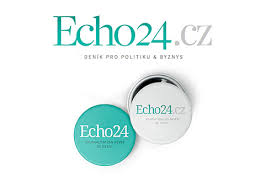As per the Fashion Transparency Index 2021, while advancements have been made by many major fashion brands and retailers to increase transparency on their policies and processes on human rights and environmental topics, there is still a lack of disclosure in connection to issues such as social auditing across the supply chain, workers’ wages, purchasing practices, gender equity, production and waste volumes, progress on circularity, and chemical use and carbon emissions by and in the supply chain, among others. The report finds that only 14 per cent of major brands disclose the overall quantity of products produced annually, making it difficult to grasp the scale of overproduction around the world.
The issue is of particular concern when approached with the knowledge that the fashion industry accounts for 4 per cent of global greenhouse gas emissions and, as per the Fast Fashion Global Market Report 2021, the fast fashion market is expected to experience an ever bigger growth as companies start adapting to the new normal brought about by the COVID-19 crisis.
Such concerns have also been the driving force behind fashion movements and initiatives such as the Fashion Industry Charter for Climate Action, the Fashion Pact and Textiles 2030, which have been adopted and loudly promoted by leading fashion voices and publications. Nevertheless, considering the fact that many major fashion magazines, influencers and celebrities continue to promote luxury, excessive shopping and the idea of non-repetition of outfits, the question is raised as to what the role of fashion media and journalism/journalists is in promoting fashion sustainability and sustainable fashion habits.
Lack of knowledge
Confronted with abundance of advertisements and messages about green, ethical, environmentally friendly and sustainable fashion products and which products are to be considered all of this (online searches for ‘sustainable fashion’ have tripled between 2016–2019 according to CAMRI Policy Brief 6) consumers are perhaps more than ever confused and lacking sufficient knowledge to make informed decisions. This is what Longo, Shankar and Nuttall see as a ‘self-inflicted sustainable consumption paradox’ or the dilemma, tension and paralysis arising from consumers’ knowledge (or the lack of it) regarding sustainability.
According to Anastasia Denisova, author of University of Westminster’s e Communication and Media Research Institute (CAMRI) Policy Brief 6 under the title “Fashion Media and Sustainability: Encouraging Ethical Consumption via Journalism and Influencers” (2021), individuals indulge in excessive shopping when they believe that it is within normative constraints and this is the reason why fashion media, journalists and influencers play an important role in educating people about the many facets of fashion sustainability.
From impulsive shopping that can be a result of one’s personality but equally reinforced by fashion articles or social media posts, to compulsive shopping resulting from a person’s pursuit of the joy and excitement that fashion outlets and associated social media accounts promote in connection to fashion and shopping, to the influence of social factors such as the so-called ‘reference groups’ with which one identifies and towards which one aspires, and the subtle powerplay on the market that places the power of choice in the consumer but at the same time associates low or high value with selected products and styles.
The brief works its way through the ways people are still being lured to excessive shopping and how fashion media and personalities support these. Exploring in detail over 1,000 media artefacts targeting women, the text finds that the psychological drivers to buy unnecessary clothing are strong and that fashion media continue to promote fast fashion.
Sins of greenwashing
More importantly, perhaps, the brief looks into how and to what extent media outlets in fashion feature and promote sustainability. The 2021 edition of the Fashion Transparency Index informs that while 62 per cent of big brands publish their carbon footprint in their own facilities, 26 per cent disclose such information at processing and manufacturing level. Only 17 per cent do so at raw material level.
Accomplishments and efforts such as these along with companies’ increasing disclosure of information about their processing facilities and raw material suppliers have been highly valued by leading sustainability-driven agencies, organizations, initiatives and projects, and further promoted by the companies themselves. Nevertheless, while much of the information out there, either as part of a label, an online product description, an advertisement or a fashion blog or article, could be true and genuine, a significant portion of it is also misleading and going against one or several of TerraChoice’s sins of greenwashing.
Since they are not always in a position to decide on the reliability of corporate information, consumers do tend to rely on and follow advice and example by media personalities and established publications. It is in this respect that fashion media and journalism could bear the role of knowledge disseminators as regards sustainability in the industry and educate and guide their readers on the many aspects of it. Still however, Denisova finds, sustainability is just a trend, not the “cornerstone of fashion journalism.”
More sustainable future
To counter this, the brief proposes that besides regulating the applicability of eco-vocabulary, magazines and other media should offer texts that inspire readers to be creative with existing clothes (e.g. offer more restyling advice) as opposed to buying new ones. The author further proposes that the psychology of shopping is featured and discussed more prominently in the texts being published. Also that media editors ensure more sustainable coverage for audiences of varied financial backgrounds. For increased transparency, the text supports the idea of attaching a clear label by which audiences would be informed of any sponsorships as regards the products and services promoted by those media (e.g. including a ‘paid advertisement’ label).
Although basing its analysis and recommendations on the scanning of more than 1,000 media artefacts from the United Kingdom, the identified shortcomings of fashion journalism are recurrent and easily traceable in other regions as well. Knowing of this, one could only hope that the increased collaborative efforts by leading fashion brands to promote sustainability in the industry are an incentive for fashion media and journalism to back this joint endeavour and support our society’s transition towards a greener and more sustainable future by equipping their audiences with the necessary knowledge and trustworthy information. This is perhaps the biggest difference they could make.
Tags:fashion, fashion media, fast fashion, journalism, slow fashion, sustainability

















